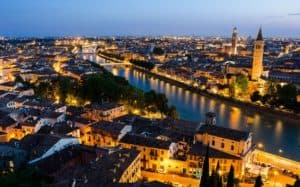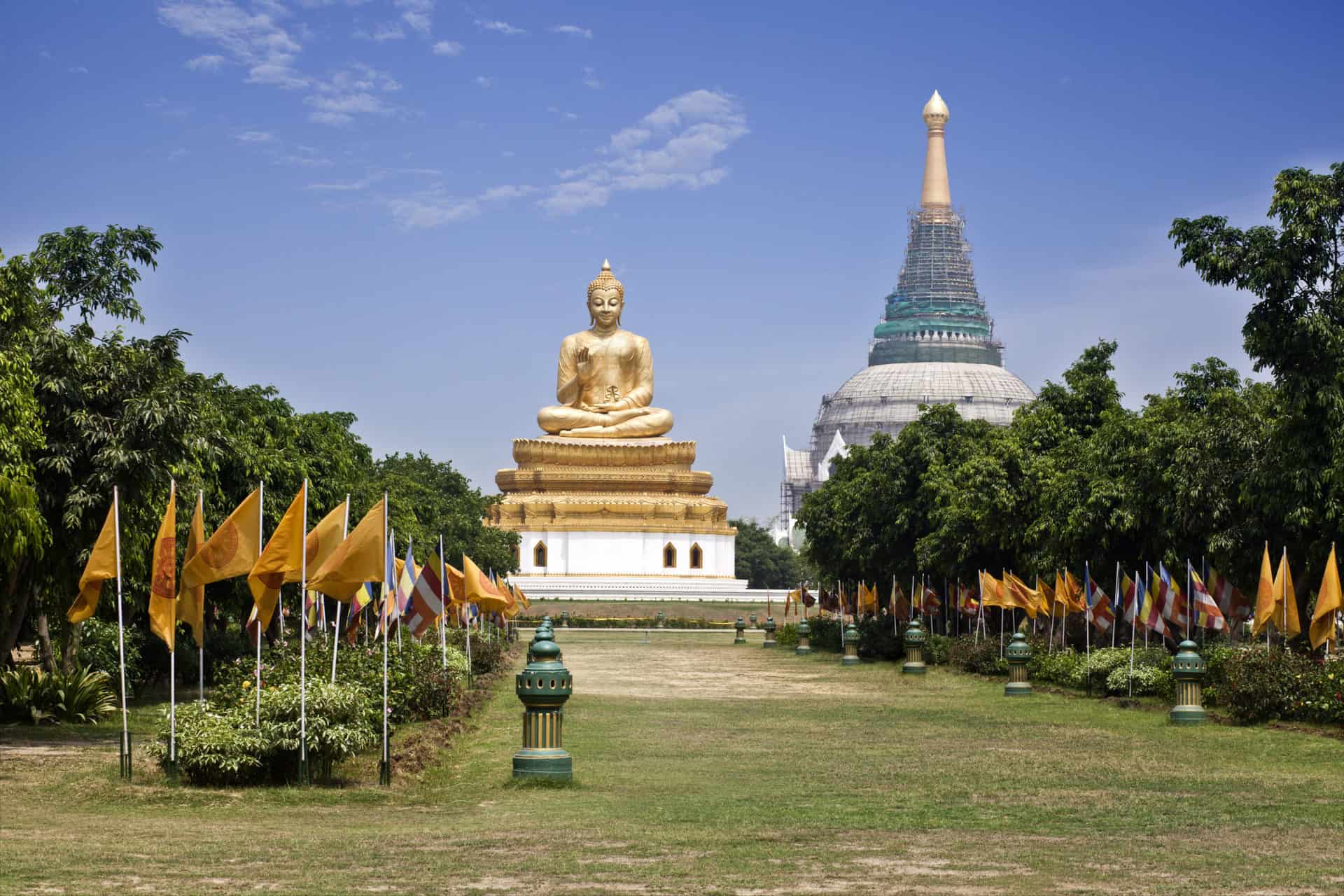Eco-Villages and Utopian Communities Around the World: A Global Overview

Updated On: April 22, 2024 by Noha Basiouny
Eco-villages represent a growing movement towards sustainability and intentional living, where communities come together to create environments in harmony with nature. These innovative settlements thrive on the principles of permaculture, aiming to become self-sufficient and reduce their ecological footprint. Rooted in cooperative living, eco-villages offer a vision of a society that values the environment, personal well-being, and communal health above individual gain.
The Global Ecovillage Network plays a pivotal role in connecting these diverse communities worldwide, fostering knowledge exchange and support systems. Through educational programmes, workshops, and shared sustainable practices, these collectives are not just habitats but hubs where members learn and live the concepts of ecological design and responsible stewardship of the land. From economic models that promote self-sufficiency to social dynamics that reflect community inclusivity, eco-villages reflect an aspiration for an eco-oriented utopia.
Table of Contents
Historical Overview of Eco-Villages

Eco-villages represent a form of intentional community that strives for environmental sustainability and a harmonious lifestyle. These communities have a rich history that interweaves with broader societal movements and self-sufficient living practices.
The Origins of Intentional Communities
Intentional communities have existed for centuries, aiming to realise a shared vision of living. The first eco-villages were an evolution of this concept, founded on ecological ideals. The term “eco-village” was coined in the late 20th century, but the essence of the idea can be traced back to various traditional societies that lived in close harmony with nature.
One of the most recognised early examples in the West is Findhorn, established in Scotland in 1962. It began as a small spiritual community and matured into a thriving eco-village, demonstrating sustainable living and ecological building techniques.
Eco-Village Development Through the Ages
Eco-villages have undergone significant transformations over the decades, adopting innovative solutions to achieve sustainability. In the 1970s, The Farm in Tennessee emerged as a notable eco-village, focusing on shared values and self-sustenance. Their approach incorporated organic farming, renewable energy, and communal living.
In more recent times, eco-villages have popped up worldwide, including in countries like Egypt, where communities are exploring sustainable living in response to local environmental challenges. The global eco-village movement has expanded to include a diverse array of practices, from low-impact housing to cooperative economies, all whilst enhancing community bonds and reducing ecological footprints.
Defining Eco-Villages and Utopian Communities
Eco-villages and utopian communities represent visions of sustainable and harmonious living that challenge conventional urban development. They are conceived on foundations of environmental stewardship and social cooperation.
Core Principles and Ethics
Eco-villages emphasise a lifestyle that is in balance with the natural world, grounded in the principles of sustainable living and permaculture design. These communities operate on the ethos of minimising ecological impact while maximising human wellbeing, striving to create a self-sufficient and resilient infrastructure.
- Sustainable Living: Rooted in resource conservation and mindful consumption.
- Permaculture Design: Integrates land, resources, people, and the environment through mutually beneficial systems.
Utopian communities, while similar in their pursuit of an ideal society, historically focus more broadly on achieving a perfect social order. Their aspirations often extend to equitable economic systems, communal living, and shared governance, aiming to realise a collective vision of a better world.
Variations Across the World
The manifestation of eco-villages and intentional communities varies globally, influenced by cultural, environmental, and economic factors. In Scandinavia, for example, eco-villages might integrate cutting-edge green technologies, while in tropical regions, communities may centre around traditional agriculture and natural building techniques.
- Scandinavia: High-tech, energy-efficient housing and communal facilities.
- Tropical Regions: Earthships, bamboo structures, and organic farms.
Every intentional community shares the common thread of a collective vision for improving their way of life and environment, although the specifics of that vision are adapted to align with local contexts and needs. This global tapestry of eco-villages and utopian communities showcases humanity’s diverse approaches to a shared aspiration for sustainable and ethical living.
The Role of the Global Ecovillage Network
We recognise the importance of interconnectedness in fostering sustainable development, which is why the Global Ecovillage Network (GEN) plays a pivotal role in uniting eco-communities worldwide. It stands as a testament to the collective effort in achieving a resilient and regenerative human presence on Earth.
Connecting Communities Worldwide
GEN acts as a vital conduit, linking ecovillages from diverse regions and cultures. This network facilitates the exchange of knowledge and experiences, enabling communities to learn from one another. By harnessing the power of connections, GEN strengthens the fabric of the global movement towards sustainability, ensuring that isolated initiatives gain visibility and support.
Support and Resources Provided by GEN
Providing support to each member of its expanding tapestry, GEN offers a wealth of resources that ecovillages can utilise to flourish. These resources come in many forms, from educational materials to networking opportunities with NGOs and other ecovillages, aiding them in implementing sustainable practices. Additionally, workshops and training sessions are organised to build capacity among communities, positioning GEN as a valuable ally and guide.
Sustainable Practices in Eco-Villages
Eco-villages embody a fusion of community life and sustainable living, greatly reducing ecological footprints. We shall explore how they harness renewable sources and prioritise biodiversity through organic agriculture.
Renewable Energy and Zero-Waste
Implementing renewable energy systems, eco-villages often rely on solar panels to harness solar energy. Energy independence ensures a reduction in greenhouse gas emissions, with some communities aiming for zero-waste lifestyles. This involves meticulous sorting, recycling, and composting, ultimately guiding eco-villages towards a cyclical, no-waste system, where all resources are utilised and repurposed to their fullest.
Organic Farming and Biodiversity
Dedicated to organic farming, eco-villages contribute to biodiversity by growing a variety of crops without harmful pesticides, which in turn supports healthier ecosystems. By employing crop rotation, companion planting, and natural fertilisers, the soil remains fertile and alive. This practice not only yields nutritious produce but also strengthens the resilience of crops to pests and diseases, ensuring sustainability for current and future generations. This approach is a cornerstone in creating sustainable communities deeply connected to their environment.
Architectural and Ecological Design

In the realm of eco-villages and utopian communities, architectural and ecological design are fundamental. These designs prioritise harmony with nature and utilise practices like permaculture, pointing to a symbiotic relationship between human habitats and the natural environment.
Use of Local Materials
We focus on the application of local materials to minimise the ecological footprint of construction. In our designs, we often select materials sourced directly from the surrounding area. For instance, utilising natural stone and timber from local forests not only reduces transportation emissions but also supports the local economy.
- Benefits of using local materials:
- Reduces transportation-related emissions
- Supports local businesses and sustains jobs
- Materials are naturally suited to local climate conditions
Integration with the Natural Environment
Integrating buildings with the natural environment involves more than simply placing structures within a natural setting. We meticulously consider the land’s topography, preserving existing ecosystems whenever possible. Our design principles reflect a commitment to low-impact living, as seen in the use of green roofs that blend with the native flora, and the incorporation of rainwater harvesting systems.
- Strategies for integration:
- Positioning structures to optimise passive solar heating and cooling
- Crafting landscaping that supports native wildlife and promotes biodiversity
- Ensuring designs complement rather than dominate the landscape
By adopting these practices, we ensure our architectural endeavours stand in accord with nature, offering residents a lifestyle that is ecologically responsible and visually cohesive with the verdant beauty around them.
Economic Models and Self-Sufficiency

In our examination of eco-villages and utopian communities, we recognise that the underpinning economic models and the pursuit of self-sufficiency are vital to their ethos. Communities meticulously design their economy and resource management systems to mirror their vision of sustainability and cooperation.
Community Economy
Eco-villages often establish a community economy that pivots on principles of shared wealth and common well-being. They typically use local participatory processes to define roles and economic functions within the community. The system may include a mix of personal and communal ventures, ensuring that basic needs are met collectively. These economies are typically characterised by the use of alternative currencies or barter systems that facilitate exchange without necessarily relying on national currencies. Some communities also run a store or outlet where they sell produce and crafts both to sustain the community financially and to share their work with a wider audience.
Trade and Exchange Systems
When it comes to trade and exchange systems, eco-villages are known for promoting systems that are equitable and sustainable. For instance, internal exchange systems can be structured around time banking or a similar value exchange system where services are traded on time invested rather than monetary value. External trade, if necessary, is conducted with a strong preference for fair trade and ethical practices that align with the self-sufficient and locally centred ethos of the community. These systems empower communities to remain resilient and reduce dependence on global economic fluctuations.
Social Dynamics and Community Living

In exploring the social dynamics and community living aspects of eco-villages and utopian communities, we find that participatory processes and shared values are pivotal for the cohesive functioning of these intentional living spaces.
Participatory Processes
We recognise that participatory processes are the lifeblood of eco-villages, ensuring that every member contributes to communal living. These processes range from collective decision-making strategies, like consensus or democratic voting, to daily operations that might involve communal meals, shared childcare, or cooperative work on sustainable projects. By engaging in participatory processes, members of the community foster a strong sense of agency and inclusivity, reinforcing the connective tissue of the community.
Example: A participatory process may include:
- Meetings: Scheduled gatherings where decisions are made.
- Task Rotations: Sharing of daily chores among community members.
Shared Values and Ethics
Our understanding is that shared values and ethics are the cornerstones of these communities. Such values often encompass sustainability, equitable resource distribution, and social justice. They manifest through an ethical code of conduct that guides communal interactions and reflects a commitment to the well-being of others and the planet. In spiritual communities, this may extend to shared rituals or collective meditations that augment the community’s bond.
Principles: Common shared values may involve:
- Sustainability: Living in a way that minimises impact on the environment.
- Equity: Ensuring fair access to the community’s resources for all members.
- Compassion: Fostering caring and supportive relationships within the community.
By integrating these participatory processes and shared values, eco-villages and utopian communities strive to function as harmonious entities where communal living transcends individualism, leading to a sustainable and ethically grounded lifestyle.
Educational Programmes and Workshops
In eco-villages and utopian communities, education plays a central role in promoting sustainable living and ecological practices. Our focus on educational programmes and workshops equips residents and visitors with the skills necessary for creating harmonious living environments that prioritise permaculture, health, and wellness.
Permaculture and Ecological Training
Permaculture design principles are at the heart of many eco-village training offerings. These educational programmes enable participants to learn about sustainable agriculture, soil health, and biodiversity. By engaging in practical, hands-on workshops, learners assimilate knowledge on how to work with natural ecosystems to produce food, build soil fertility, and design energy-efficient communities. These workshops often include instructions on creating natural buildings, managing water resources, and using renewable energy sources effectively.
Health and Wellness Education
Holistic well-being is just as vital as ecological sustainability in our communities. Through various health and wellness workshops, participants explore practices that support a healthy lifestyle. These workshops may encompass a range of topics, including nutritious eating, herbal medicine, and stress management techniques. Yoga is another integral component, offering a tool for physical and mental balance. Our education in this area seeks to empower individuals with the knowledge to lead lives that are healthy for both themselves and the planet.
Notable Eco-Villages Around the World
In the movement towards sustainable living, several communities have distinguished themselves by embodying principles of environmental stewardship and social harmony.
Findhorn Ecovillage, Scotland
Tucked away in the North of Scotland, Findhorn Ecovillage has emerged as a shining example of sustainable practices harmonising with spiritual values. It was established in the 1960s and has since grown into a thriving community, with eco-homes constructed from natural and reclaimed materials, and organic food production that adheres to the cycles of nature.
Auroville, India
Auroville, motivated by the vision of ‘human unity,’ is a unique community located in Southern India. Founded in 1968, Auroville pioneers innovative environmental techniques, including the reforestation of severely degraded land, and is supported by a palpable sense of a collective quest for spiritual and social transformation.
The Federation of Damanhur, Italy
Meanwhile, in the Alpine foothills of Northern Italy, The Federation of Damanhur celebrates a union of art, faith, and ecology. Celebrated for its intricate underground temples and complex murals, Damanhur is a living laboratory for sustainable living, known for its social and spiritual research, and stands out as a beacon of creativity and ecological respect.
The emphasis across these eco-villages is not solely on ecological sustainability but also encapsulates the essence of communal living and personal development. Communities like Crystal Waters in Australia, and Tamera in Portugal, reinforce the vision that living in harmony with nature can foster vibrant and profound transformations in human society.
Challenges and Future Directions

Eco-villages and utopian communities face a complex array of challenges and future directions that are crucial for their development. In addressing these, two main areas stand out: tackling modern environmental issues and the rise of eco-villages within urban settings.
Addressing Modern Environmental Issues
To pave the way towards a regenerative world, eco-villages must confront pressing environmental challenges head-on. Our initiatives must be resilient and adaptive, integrating ecological, economic, and social sustainability into their very fabric. Bold strategies are required to manage natural resource depletion, the impacts of climate change, and biodiversity loss. Eco-villages should not only aim to preserve the status quo but actively work towards the regeneration of degraded ecosystems.
The Growth of Urban Eco-Villages
The concept of eco-villages has transcended rural bounds, leading to the growth of urban eco-villages. These urban community constructs must navigate the complexities of city life, often requiring innovative approaches to integrate green spaces and sustainable living practices in dense urban environments. By fostering these communities, we contribute to envisioning and materialising a future where sustainability and urban living coexist harmoniously. Their rise signifies a transformative step towards an ecological paradigm within our cities’ hearts.
In each area, our collective efforts are directed towards building a more sustainable and harmoniously integrated society, reflecting both local needs and global environmental priorities.
Frequently Asked Questions
In this section, we address common inquiries about eco-villages, shedding light on their unique attributes and the part they play in forging a sustainable future.
What are the defining characteristics of an eco-village?
Eco-villages are distinguished by their commitment to environmental sustainability, social cohesion, and economic stability. They are intentionally designed communities, utilising local resources and participatory processes to foster a way of life that is in harmony with nature.
How do eco-villages contribute to sustainable living?
Eco-villages strive for a reduced ecological footprint and emphasise self-sufficiency through renewable energy, organic farming, and sustainable waste management. They serve as a model for sustainable practices, demonstrating viable solutions to environmental challenges.
Can you provide examples of successful eco-villages around the globe?
Yes, success stories of eco-villages span continents, from the Findhorn Foundation in Scotland to the Auroville in India. These examples showcase the practicality and diversity of approaches within the eco-villages global network.
What is the role of community and collaboration in eco-villages?
Community life and collaboration are central to eco-villages, providing a support system where decisions are made democratically. These values strengthen the social fabric and ensure that every member contributes to and benefits from the collective well-being of the community.
How do eco-villages balance modern amenities with environmental consciousness?
Eco-villages often incorporate green technologies and innovative design to offer comfort while minimising harm to the environment. They combine modern amenities with a commitment to ecological balance, creating spaces that are both functional and sustainable.
In what ways do spiritual beliefs integrate with eco-village practices?
In many eco-villages, spirituality plays a role in fostering a deep connection with the Earth and a shared sense of purpose. This integration manifests in respectful land stewardship and mindful living practices that honour both community and the environment.






